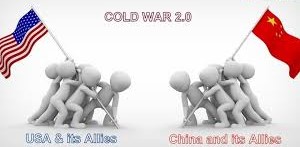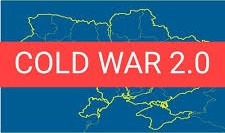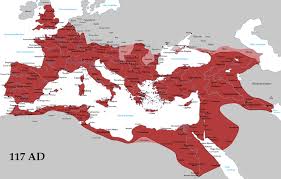
Pics Courtesy Net
My Article published on the Life of Soldier website on 24 Jan 25.
Imperialism—the extension of a nation’s power through military force, diplomacy, and economic means—has been a driving force behind much of world history. The sustainability of such power often hinges on how well an empire can manage its vast resources and territories. The idea that empires succumb to imperial overstretch stems from the concept first articulated by historian Paul Kennedy in his book The Rise and Fall of the Great Powers. The idea of imperial overstressing refers to the point at which the burden of managing expansive territories, diverse populations, and economic interests becomes too great to bear. It posits that empires decline when their ambitions and commitments abroad exceed their economic and societal resources. The hypothesis is not outdated but is a relevant issue for current global powers like the United States and China.
Theories of Imperialism
Understanding imperial overstressing is not just a theoretical exercise but a crucial aspect of understanding historical and contemporary geopolitics. It requires a foundation in the different theories of imperialism that have shaped historical and modern geopolitics and their practical application in analysing the rise and fall of empires.
Economic Theory. A Key Driver of Imperialism. This theory, championed by thinkers like John Hobson and Vladimir Lenin, offers a unique perspective on the motivations behind imperialism. It posits that the search for new markets, investment opportunities, and surplus capital drives imperial expansion, with the need to find profitable avenues for surplus capital being a key factor. Lenin’s emphasis on imperialism as a monopoly stage of capitalism, where the economic elite seeks new outlets for their excess capital by exploiting weaker regions, further enriches our understanding of this phenomenon.
Strategic Theory. The Significance of Key Areas. This approach focuses on the strategic importance of key areas such as naval routes, ports, and choke points. It underscores the significant advantages these areas provide in global power projection and how empires expanded to dominate these regions, securing trade routes and protecting vital interests. For instance, the British Empire’s control over the Suez Canal allowed it to maintain influence in the Indian Ocean and Asia, highlighting the strategic value of such key areas.
Cultural Theory. The cultural theory views imperialism as driven by a desire to spread dominant cultural, religious, or ideological values. It justified expansion as a form of “civilising mission,” presenting imperial control as beneficial for native populations. The British Empire’s justification for colonisation in Africa and Asia often emphasised the need to introduce Christianity and Western civilisation to supposedly “backward” societies.
Historical Context: Case Studies
The Roman Empire
Expansion and Limits. At its height, the Roman Empire spanned from the British Isles to the Middle East, encompassing diverse cultures, languages, and resources. The Roman system of governance needed to be equipped to handle the complexities of such a vast empire. Maintaining an enormous legionary force stretched the empire’s resources, especially when dealing with distant provinces needing protection and oversight.
Economic Strain. The Roman Empire faced profound economic challenges. It relied heavily on slave labour, heavy taxes from provinces, and tributes from conquered peoples to fund its expenditures. The vast system of roads, military garrisons, and cities required a continuous flow of resources. The reliance on trade and the dependence on foreign resources, such as grain from Africa and olive oil from Spain, made the empire vulnerable to disruptions.
Military and Political Challenges. The Roman military’s attempts to expand—through campaigns in Parthia, for example—often overstretched the system. Long supply lines, the need for vast garrisons, and the difficulty of integrating newly conquered peoples into the Roman system all contributed to inefficiencies. The Roman political system struggled to manage these challenges, with corruption, favouritism, and nepotism undermining administrative effectiveness.
Decline and Fall. The decline of the Western Roman Empire is often attributed to the failure to manage the economic, military, and administrative challenges of ruling such a vast territory. The Roman system could not adapt to the pressures of dealing with a constantly shrinking tax base, the costs of suppressing rebellions, and the necessity of defending its borders against ever-increasing barbarian invasions. The eventual collapse in 476 AD was a military defeat and a reflection of the empire’s inability to control its territories.
The British Empire
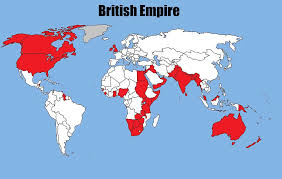
Global Reach and Maintenance. At its zenith, the British Empire controlled vast territories across Africa, Asia, the Americas, and the Pacific. The imperial model relied on leveraging colonies for economic gain—extracting resources and creating markets for British goods. However, maintaining global control required significant military presence and administrative oversight.
Financial Strain. Maintaining an empire was costly. The British government had to fund the Royal Navy, military expeditions, and administrative costs in distant colonies. The burden of protection, trade route security, and the suppression of rebellions greatly strained the British economy. The need to finance these efforts led to increased taxes at home, public discontent, and growing resistance in the colonies.
World Wars as Catalysts. The impact of World Wars I and II on the British Empire was pivotal. The financial costs of these wars were staggering—Britain’s debt ballooned, and the economic impact was felt domestically and internationally. The wars also disrupted global trade and the imperial system, with colonies demanding greater autonomy and independence post-war. The military strain of controlling distant regions was revealed as the British Army was spread thin across multiple fronts, significantly increasing the empire’s burden and contributing to its eventual downfall.
Decolonisation. The aftermath of World War II marked the beginning of the end for the British Empire. The pressure to rebuild post-war economies, combined with nationalist movements across the empire, forced Britain to reassess its imperial strategy. As students, scholars, and individuals interested in history, geopolitics, and imperialism, your understanding and analysis of these events can contribute to reassessing imperial strategies. Decolonisation was hastened by the realisation that the costs of maintaining control over colonies far outweighed the benefits. The granting of independence to India, Pakistan, and other African and Caribbean colonies marked the final phase of British imperial overstretch.
The Soviet Union
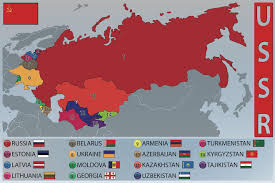
Expansion and Control. The Soviet Union extended its influence over Eastern Europe, Central Asia, and parts of the Middle East and Africa. The need to maintain control over these regions placed significant strain on Soviet resources. The empire’s reliance on military force to maintain its influence was economically and politically costly.
Economic Costs. The Soviet Union’s economic model was centred on heavy industry and military spending. The costs of the Cold War arms race with the United States required vast resources. The Soviet leadership prioritised military expenditure over consumer goods and economic diversification, resulting in stagnant living standards and economic growth. The command economy, characterised by state ownership of the means of production and centralised planning, could not allocate resources efficiently, exacerbating the strain on the Soviet system.
Afghan War and Dissolution. The Soviet intervention in Afghanistan exposed the limits of Soviet military power. The conflict drained economic resources, led to a protracted war effort, and showed the logistical difficulties of fighting a guerrilla war in a foreign country. The Soviet military, despite its size and capabilities, was overstretched, unable to sustain the conflict or effectively pacify the Afghan population. The economic burden of the war, combined with the impact on public morale and Soviet legitimacy, contributed to the eventual dissolution of the USSR in 1991.
End of the Soviet Empire. Economic stagnation, the inability to adapt to internal and external pressures, and the need for rapid reform precipitated the collapse of the Soviet Union. Gorbachev’s glasnost and perestroika policies accelerated the fragmentation and collapse process. The Soviet system could not control its expansive borders and diverse populations.
Analysis of the Present Situation
Understanding the impact of imperial overstressing is crucial for contemporary global powers—particularly the United States and China. They face unique challenges in expanding and maintaining influence while avoiding the pitfalls of past empires.
United States: Policy of Sharing the Burden
Many scholars and commentators argue that the U.S. is experiencing symptoms of overstretch, especially in the 21st century.
Global Presence. The U.S. maintains a vast network of over 750 military bases across over 80 countries and regions, spending nearly $900 billion annually on defence (as of 2023). However, the costs—both financial and political—are high. While this ensures global influence and deterrence, the financial burden of maintaining this military dominance has grown unsustainable.
Military Commitments. It engages in conflicts from the Middle East to East Asia and supports NATO’s collective defence. The prolonged wars in Afghanistan and Iraq cost the U.S. trillions of dollars while yielding questionable strategic benefits. These wars drained resources and contributed to domestic political fatigue regarding foreign interventions.
Rising Competition. American hegemony faces challenges as the unipolar world established after the Cold War transitions to a multipolar order. The emergence of peer competitors like China and Russia, combined with regional challenges from powers like Iran and North Korea, strains U.S. resources further. China’s Belt and Road Initiative, technological advancements, and growing military assertiveness directly challenge U.S. supremacy in Asia and beyond. Long-standing allies like Saudi Arabia, Turkey, and even parts of Europe are exploring partnerships with non-Western powers, reflecting diminishing U.S. influence. Efforts by BRICS nations and others to establish alternative financial systems weaken the U.S. dollar’s hegemony, reducing America’s economic leverage.
Domestic issues. Imperial overstretch often involves prioritising external ambitions over internal needs. Internal dysfunction amplifies the effects of overstretching. The U.S. national debt surpassed $33 trillion in 2023, with significant portions of government revenue devoted to servicing debt rather than addressing domestic priorities. Growing public resistance to foreign interventions is challenging the traditional support for expansive global engagement. Deep political polarisation and frequent gridlock in Congress undermine the ability to formulate coherent foreign and domestic policies and the nation’s capacity to adapt to changing global realities.
Economic Costs and Political Dilemmas. The U.S. faces a strategic dilemma—maintaining influence without overcommitting resources. The domestic debate over defence spending, the impact on social services, and the need for economic diversification reflect a broader concern about imperial overstretch. The U.S. must find ways to project power through strategic partnerships, financial ties, and multilateral engagements.
Unique Advantages. While the risks of overstretch are accurate, the U.S. retains unique advantages. America’s technological innovation remains unparalleled, especially in AI, biotechnology, and defence. Unlike many competitors, the U.S. benefits from a relatively youthful and diverse population due to immigration. While strained, the U.S.’s network of allies and partners remains formidable compared to competitors like China.
Possible Way Out. To avoid imperial overstretch, the U.S. must prioritise strategic restraint, focus on domestic revitalisation, and foster multilateral approaches to global challenges. The U.S. can learn from past empires’ decline by focusing on flexibility, adaptability, and the strategic use of alliances. The creation of the Indo-Pacific Economic Framework (IPEF) and Quad partnership illustrates an attempt to share the burden of regional security with like-minded partners in the Indo-Pacific, avoiding the direct military engagement that could lead to overstretch. Whether it can effectively recalibrate its ambitions remains the key question for its future.
China: Influence through Revival of Trade Routes
While China is often viewed as a rising power, some argue it is also at risk of imperial overstretch. As Beijing pursues ambitious global and regional objectives, its expanding commitments could exceed its economic, political, and military capacity, creating vulnerabilities.
Strategic Expansion. China’s Belt and Road Initiative (BRI), launched in 2013, is a cornerstone of its global strategy. It aims to connect Asia, Africa, and Europe through infrastructure projects. The initiative extends China’s influence through economic investment in infrastructure, trade agreements, and soft power initiatives. It includes projects in Asia, Africa, and Europe, linking China’s markets with new consumers and supply chains.
Challenges. Many BRI recipient countries, such as Sri Lanka, Pakistan, and Zambia, struggle to repay Chinese loans. This has led to debt crises and project defaults, reducing China’s investment returns. The “debt-trap diplomacy” narrative has damaged China’s reputation, forcing it to restructure or forgive loans, adding financial strain. Resistance to the BRI has grown, with countries like Malaysia renegotiating or cancelling projects. Anti-Chinese sentiment in Africa and Southeast Asia complicates China’s efforts to maintain influence. Further, securing Chinese investments in politically unstable regions, such as Central Asia or the Middle East, increases China’s overseas military and diplomatic commitments.
Taiwan and Regional Ambitions: Risk of Overreach. China’s ambitions to assert dominance in its neighbourhood, particularly over Taiwan, risk provoking military and economic overstretch. A military invasion of Taiwan would likely trigger U.S. and allied intervention. This scenario could escalate into a costly conflict, depleting China’s resources and potentially destabilising the Communist Party’s rule.
South China Sea and Border Conflicts. China’s militarisation of the South China Sea has alienated neighbouring countries, such as Vietnam and the Philippines, driving them closer to the U.S. This increases the cost of managing regional security while undermining Beijing’s goals. Persistent tensions with India along the Himalayan border require significant military deployments, distracting resources from other priorities.
Economic Challenges. China’s economic engine, long its greatest strength, is now showing signs of strain, which could undermine its ability to sustain global ambitions. Post-pandemic recovery has been sluggish, with growth rates declining to their lowest in decades. Youth unemployment and a slowing property market exacerbate internal vulnerabilities. The transition from export-driven to domestic consumption-driven growth has proven difficult, limiting China’s ability to finance overseas commitments. The U.S.-led “decoupling” of supply chains and restrictions on technology exports, such as advanced semiconductors, threatens China’s technological ambitions and long-term competitiveness.
Domestic Difficulties. China’s authoritarian model under Xi Jinping centralises power but creates systemic risks that could exacerbate overstretch. Xi’s consolidation of power reduces flexibility in decision-making and increases the risk of policy mistakes. For instance, China’s zero-COVID policy severely disrupted its economy and global supply chains. China faces a demographic decline due to decades of the one-child policy. Fewer workers and a rapidly ageing population reduce economic productivity and increase social welfare costs. Economic inequality, ethnic tensions in regions like Xinjiang and Tibet, and crackdowns on freedoms create internal unrest, diverting attention and resources from external ambitions. While China has invested heavily in modernising its military, sustaining this pace of spending strains its economy, particularly during a period of slower growth.
Global Backlash: Resistance to Chinese Influence. China’s assertive foreign policy has sparked resistance across various regions, straining its resources and soft power. Western democracies, led by the U.S., have formed coalitions to counter China’s rise, such as AUKUS, the Quad, and NATO’s increased focus on Asia. China must expend significant diplomatic and economic resources to manage these challenges. While China has made inroads in Africa, Latin America, and Southeast Asia, its investments often face criticism for being extractive and environmentally damaging. Local resistance to Chinese influence, such as protests against Chinese companies in Africa, adds to the cost of maintaining its foothold.
Recalibration to Avoid Overstretch. China’s rise is remarkable, but its ambition to reshape the global order comes with significant risks of overreach. Whether it can sustain its ascent without succumbing to imperial overstretch will depend on its ability to balance global ambitions with domestic stability and strategic restraint. To avoid imperial overstretch, China must recalibrate its strategies. It should focus on high-value, strategically important BRI projects rather than overextending into low-return or high-risk regions. Domestic economic stability and technological innovation must be prioritised to support long-term ambitions. Shifting from coercive tactics to building genuine partnerships and addressing local grievances in host countries would pay higher dividends. It should avoid entanglements that could escalate into costly conflicts, particularly with the U.S. or regional neighbours.
Conclusion. The historical examples of empires that succumbed to imperial overstretch—such as the Roman Empire, the British Empire, and the Soviet Union—reveal common patterns in the relationship between expansion, resource management, and sustainability. The present-day geopolitical landscape, marked by the U.S. and China, requires these nations to carefully navigate the challenges of imperial overstretch. The United States must balance its global responsibilities with economic constraints, while China’s BRI presents a new form of strategic expansion that relies heavily on economic diplomacy and investment. By learning from the past, contemporary powers can avoid the pitfalls that led to the decline of previous empires. The focus should be on maintaining strategic flexibility, using economic partnerships to share the burden of influence, and avoiding overcommitment in military and economic terms. The future will likely shift from direct imperial control to networks of influence, economic leverage, and strategic alliances—less visible than traditional empires but no less potent in shaping global geopolitics.
Your valuable comments are most welcome.
Link to the article on the website:-
Imperial Overstressing: A Crucial Aspect in the Rise and Fall of Empires
For regular updates, please register your email here:-
References and credits
To all the online sites and channels.
References:-
- Hobson, John. Imperialism: A Study. London: George Allen & Unwin, 1902.
- Lenin, Vladimir I. Imperialism, the Highest Stage of Capitalism. Moscow: Progress Publishers, 1917.
- Ferguson, Niall. Empire: The Rise and Demise of the British World Order and the Lessons for Global Power. New York: Basic Books, 2003.
- Kotkin, Stephen. Armageddon Averted: The Soviet Collapse, 1970-2000. Oxford: Oxford University Press, 2008.
- Ikenberry, G. John. “The Future of American Power.” Foreign Affairs 89, no. 6 (2010): 56-68.
- Trevithick, Richard, “China’s Belt and Road Initiative: Assessing Its Scope, Scale, and Impact.” The Diplomat, September 25, 2023. https://thediplomat.com/2023/09/chinas-belt-and-road-initiative-assessing-its-scope-scale-and-impact/
- Chatham House: “The Belt and Road Initiative: Implications for Europe,” June 2023. https://www.chathamhouse.org/2023/06/belt-and-road-initiative-implications-europe
- Council on Foreign Relations: “U.S. Global Strategy in an Era of Competitive Great Power Politics,” November 2022. https://www.cfr.org/2022/11/us-global-strategy-era-competitive-great-power-politics
Disclaimer:
Information and data included in the blog are for educational & non-commercial purposes only and have been carefully adapted, excerpted, or edited from reliable and accurate sources. All copyrighted material belongs to respective owners and is provided only for wider dissemination.



